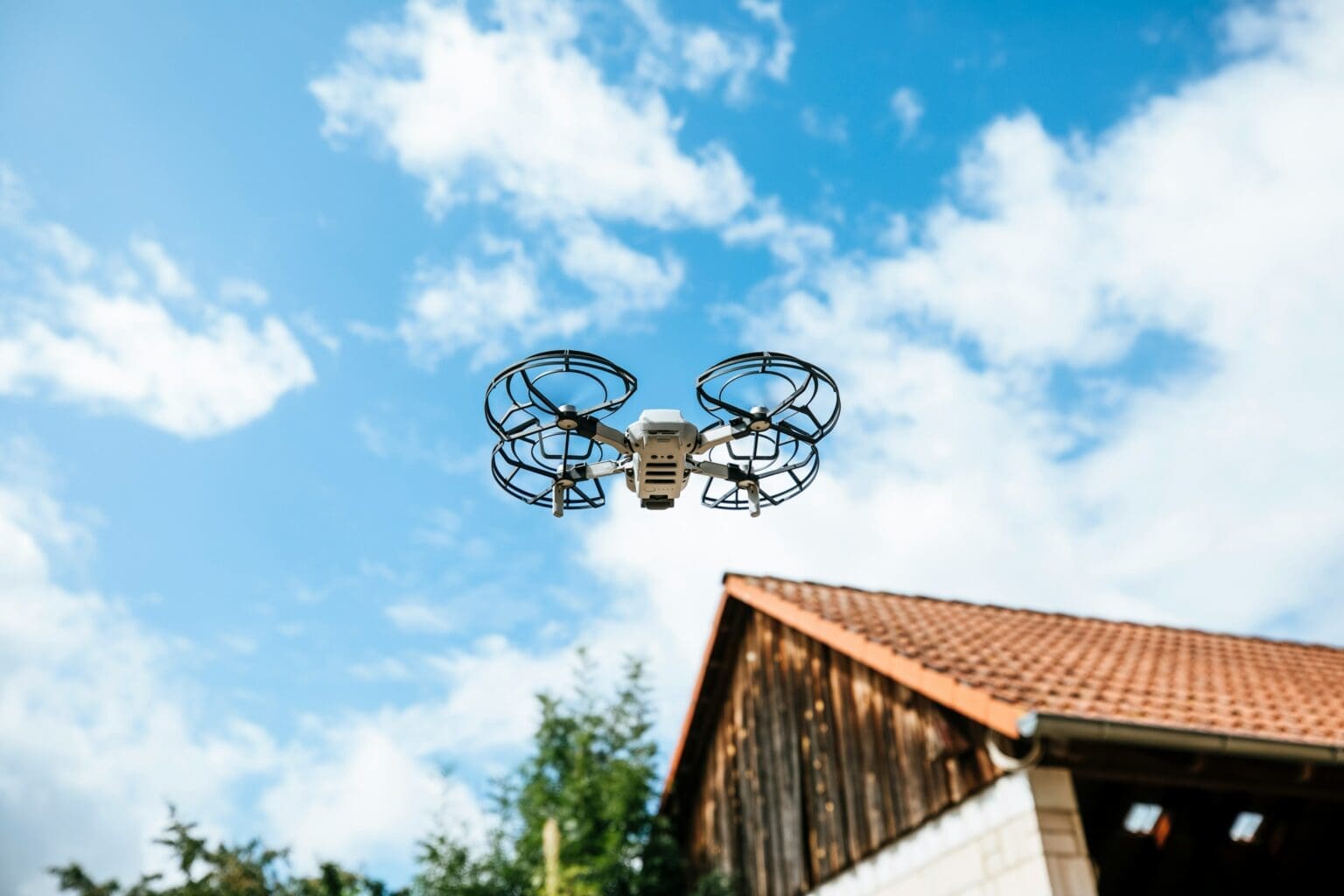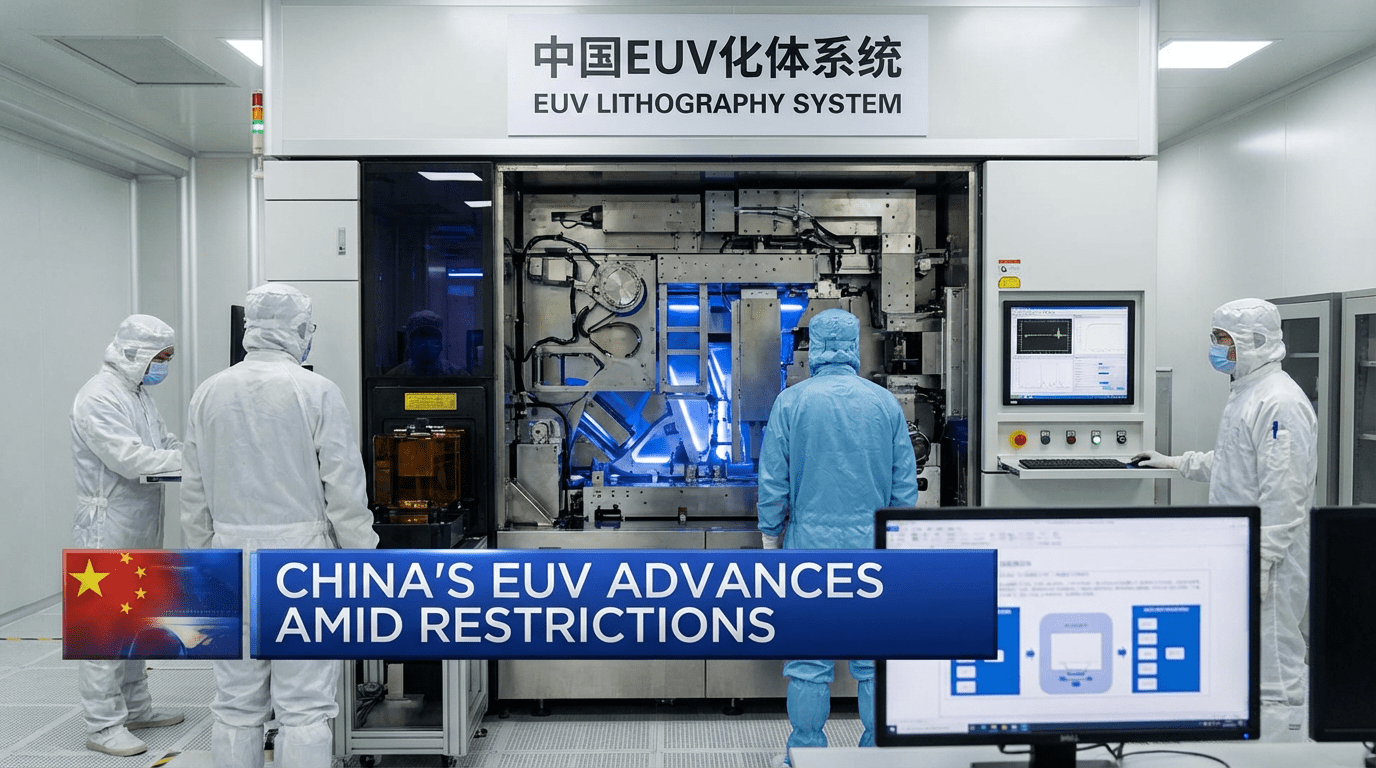Introduction to Robot Controllers and Microcontrollers
Robotics is an exciting field that blends mechanics, electronics, and software to create intelligent machines capable of autonomous operations. At the heart of every robot lies a controller, the brain that processes data from sensors, makes decisions, and sends commands to actuators. While many controllers exist, microcontrollers (MCUs) are the most commonly used processing units in robotics, especially for beginners and hobbyists.
Understanding microcontrollers is essential for anyone looking to build and program robots. These compact, low-power computing devices allow robots to interpret inputs, execute programmed instructions, and control physical components such as motors and LEDs. Whether designing a simple line-following robot or a complex autonomous system, choosing the right microcontroller is a fundamental step.
This guide explores the basics of robot controllers, the role of microcontrollers in robotic systems, and key considerations when selecting one for a project.
What is a Robot Controller?
A robot controller is the core processing unit responsible for managing a robot’s operations. It takes inputs from various sensors, processes the data, and sends control signals to actuators (e.g., motors, servos, grippers). The efficiency of a robot largely depends on the capabilities of its controller.
There are different types of controllers used in robotics:
- Microcontrollers (MCUs) – Small, dedicated computing units designed for embedded systems.
- Single Board Computers (SBCs) – More powerful than MCUs, commonly used for AI-driven applications (e.g., Raspberry Pi, NVIDIA Jetson).
- Programmable Logic Controllers (PLCs) – Industrial-grade controllers used in manufacturing and automation.
- Custom Control Boards – Specialized boards designed for specific robotic applications.
Among these, microcontrollers are the most widely used for small and medium-scale robotics due to their affordability, efficiency, and ease of programming.
Understanding Microcontrollers in Robotics
A microcontroller is a compact, integrated circuit that contains a processor (CPU), memory, input/output (I/O) interfaces, and timers within a single chip. It functions as an independent computing device, capable of running a pre-programmed set of instructions without requiring an operating system.
1. Key Components of a Microcontroller
A microcontroller consists of several essential components that work together to execute commands:
- CPU (Central Processing Unit): The brain of the microcontroller, responsible for executing instructions.
- RAM (Random Access Memory): Temporary storage for data being processed.
- ROM/Flash Memory: Stores the microcontroller’s firmware or program.
- I/O Pins: Used to interface with external sensors, motors, and other peripherals.
- Timers & Counters: Useful for measuring time intervals and event counting.
- Analog-to-Digital Converter (ADC): Converts analog sensor signals (e.g., temperature, light) into digital data.
- Pulse Width Modulation (PWM): Controls motor speed and LED brightness.
Each of these components plays a critical role in robotic operations, making microcontrollers a versatile choice for automation and control.
2. Why Use Microcontrollers in Robotics?
Microcontrollers are ideal for robotic applications due to their numerous advantages:
✅ Cost-Effective: Microcontrollers are inexpensive compared to SBCs and industrial PLCs.
✅ Low Power Consumption: Suitable for battery-operated robots.
✅ Real-Time Processing: Can execute instructions with minimal delay, ensuring precise control.
✅ Compact Size: Easily fits within small robotic systems.
✅ Ease of Programming: Many MCUs support beginner-friendly languages such as C, C++, and Python.
Due to these benefits, microcontrollers are used in a variety of robotic applications, from simple obstacle-avoiding robots to advanced robotic arms.
Popular Microcontrollers for Robotics
There are numerous microcontrollers available for robotics, each with different capabilities and performance levels. Some of the most widely used microcontrollers include:
1. Arduino (ATmega328, ATmega2560)
- One of the most popular microcontroller platforms for beginners.
- Offers an easy-to-use C++-based programming environment.
- Ideal for small robotics projects like line-following robots, robotic arms, and automation systems.
- Examples: Arduino Uno (ATmega328P), Arduino Mega (ATmega2560).
2. ESP32 & ESP8266 (Wi-Fi & Bluetooth Enabled)
- Microcontrollers with built-in Wi-Fi and Bluetooth capabilities.
- Suitable for IoT-based robotics, remote-controlled robots, and wireless communication systems.
- ESP32 is more powerful than ESP8266, featuring dual-core processing.
3. STM32 (ARM Cortex-M Series)
- Advanced microcontroller series with high-speed processing.
- Used in more complex robots that require real-time processing and multiple peripherals.
- Popular for drones, robotic arms, and autonomous vehicles.
4. PIC Microcontrollers (Microchip Technology)
- Used in industrial and commercial robotic applications.
- Known for efficiency, low power consumption, and high reliability.
5. Texas Instruments MSP430
- Ultra-low power microcontroller ideal for battery-operated robots.
- Features advanced power-saving modes for energy-efficient applications.
Selecting the right microcontroller depends on the complexity of the robot, power constraints, and required communication interfaces.
Microcontrollers serve as the backbone of modern robotics, enabling robots to process inputs, execute instructions, and control physical components efficiently. Understanding their architecture, key components, and advantages is essential for designing robotic systems.
In the next section, we will explore how to program microcontrollers for robotics, interfacing sensors and actuators, and implementing real-time control in robotic applications.
Programming Microcontrollers for Robotics
Once you have selected a microcontroller for your robotic project, the next step is to program it to control various components such as motors, sensors, and communication modules. Programming microcontrollers requires understanding how to write, upload, and execute code to make the robot perform desired tasks.
1. Programming Languages for Microcontrollers
Different microcontrollers support different programming languages. Some of the most commonly used languages for programming microcontrollers in robotics include:
- C/C++ – The most widely used language for microcontrollers. Arduino, STM32, and PIC microcontrollers use C/C++ for efficient and low-level control.
- Python – Some microcontrollers, such as the ESP32 and MicroPython-enabled boards, support Python for easier scripting.
- Assembly Language – Used for low-level programming where optimization and speed are critical (less common for beginners).
- Block-Based Coding (Scratch, Blockly, Arduino Blocks) – Simplified, visual programming for educational robotics.
For most hobbyists and beginners, C++ (Arduino IDE) or MicroPython are the best starting points.
2. Common Development Environments
Each microcontroller has a corresponding Integrated Development Environment (IDE) where you write, compile, and upload code:
- Arduino IDE – Used for Arduino-based microcontrollers.
- PlatformIO – A versatile IDE supporting ESP32, STM32, and more.
- MicroPython / Thonny – A Python-based environment for ESP32 and Raspberry Pi Pico.
- MPLAB X IDE – Used for programming PIC microcontrollers.
- Keil uVision / STM32CubeIDE – Development tools for ARM-based MCUs.
Selecting the right development environment depends on your microcontroller and preferred programming language.
3. Writing and Uploading Code to a Microcontroller
The typical process of programming a microcontroller follows these steps:
- Write Code – Using an IDE, write instructions in C++, Python, or another supported language.
- Compile Code – The code is converted into machine instructions.
- Upload to Microcontroller – The compiled program is transferred to the microcontroller via USB, serial, or wireless methods.
- Execute the Program – The microcontroller runs the uploaded program, controlling connected components.
Example: Blinking an LED using Arduino (C++)
int ledPin = 13; // Define the LED pin
void setup() {
pinMode(ledPin, OUTPUT); // Set pin as output
}
void loop() {
digitalWrite(ledPin, HIGH); // Turn LED on
delay(1000); // Wait for 1 second
digitalWrite(ledPin, LOW); // Turn LED off
delay(1000); // Wait for 1 second
}This simple program makes an LED blink on and off, a fundamental exercise in learning microcontroller programming.
Interfacing Sensors and Actuators with Microcontrollers
Robots rely on sensors to gather information and actuators to perform actions. A microcontroller processes sensor data and controls actuators accordingly.
1. Connecting Sensors to a Microcontroller
Sensors help robots perceive the environment by measuring physical parameters such as light, distance, temperature, and motion. Sensors are categorized into:
- Analog Sensors – Provide continuous voltage output (e.g., temperature sensors, light sensors).
- Digital Sensors – Output binary values (e.g., push buttons, limit switches).
- I²C/SPI Sensors – Use communication protocols to transmit complex data (e.g., IMU sensors, depth cameras).
Example: Interfacing an Ultrasonic Sensor (HC-SR04) with Arduino
An ultrasonic sensor measures distance by sending sound waves and calculating the time it takes for the echo to return.
const int trigPin = 9;
const int echoPin = 10;
void setup() {
pinMode(trigPin, OUTPUT);
pinMode(echoPin, INPUT);
Serial.begin(9600);
}
void loop() {
digitalWrite(trigPin, LOW);
delayMicroseconds(2);
digitalWrite(trigPin, HIGH);
delayMicroseconds(10);
digitalWrite(trigPin, LOW);
long duration = pulseIn(echoPin, HIGH);
int distance = duration * 0.034 / 2; // Convert time to distance
Serial.print("Distance: ");
Serial.print(distance);
Serial.println(" cm");
delay(500);
}This program makes the microcontroller read the distance and print it to the serial monitor.
2. Controlling Actuators with a Microcontroller
Actuators are output devices that perform physical actions, such as moving motors, opening grippers, or turning on LEDs.
- Servo Motors – Used for precise angular movement.
- DC Motors – Used in wheeled robots and movement-based applications.
- Stepper Motors – Used when precise positioning is needed (e.g., robotic arms).
- Solenoids & Relays – Used for high-power switching applications.
Example: Controlling a Servo Motor
A servo motor can be controlled using Pulse Width Modulation (PWM) signals from a microcontroller.
#include <Servo.h>
Servo myServo;
int servoPin = 9;
void setup() {
myServo.attach(servoPin); // Attach servo to pin 9
}
void loop() {
myServo.write(0); // Move servo to 0 degrees
delay(1000);
myServo.write(90); // Move servo to 90 degrees
delay(1000);
myServo.write(180); // Move servo to 180 degrees
delay(1000);
}This code moves a servo between 0°, 90°, and 180° positions.
Implementing Real-Time Control in Robotics
Real-time control is crucial for robotic applications where precise timing and immediate responses are required. Some techniques to achieve real-time control include:
1. Interrupts for Responsive Control
Interrupts allow a microcontroller to pause execution and respond to an external event immediately. This is useful for obstacle avoidance, button presses, or sensor triggers.
Example: Using an Interrupt in Arduino
const int buttonPin = 2;
volatile bool buttonPressed = false;
void buttonISR() {
buttonPressed = true;
}
void setup() {
pinMode(buttonPin, INPUT_PULLUP);
attachInterrupt(digitalPinToInterrupt(buttonPin), buttonISR, FALLING);
}
void loop() {
if (buttonPressed) {
Serial.println("Button Pressed!");
buttonPressed = false;
}
}This program detects button presses without constantly checking in the loop.
2. Real-Time Operating Systems (RTOS)
For complex robotic applications, Real-Time Operating Systems (RTOS) help manage multiple tasks efficiently. FreeRTOS is commonly used for ESP32 and STM32-based robotics.
Programming microcontrollers is the foundation of robotic control. By understanding how to write, upload, and execute code, interface sensors, and control actuators, roboticists can create intelligent robots that interact with their environment. Real-time control techniques such as interrupts and RTOS further enhance responsiveness and efficiency.
In the next section, we will explore advanced microcontroller architectures, communication protocols, troubleshooting common issues, and future trends in robot controllers.
Advanced Microcontroller Architectures for Robotics
As robotic applications grow in complexity, microcontrollers have evolved to support advanced processing needs. Choosing the right microcontroller architecture ensures efficient performance, better power management, and scalability for future projects.
1. 8-bit vs. 16-bit vs. 32-bit Microcontrollers
Microcontrollers come in different architectures based on their processing capabilities:
| Architecture | Examples | Use Case |
|---|---|---|
| 8-bit MCUs | ATmega328 (Arduino Uno), PIC16F877 | Simple robotics, LED control, basic motor control |
| 16-bit MCUs | MSP430, PIC24 | Power-efficient applications, low-power robots |
| 32-bit MCUs | STM32, ESP32, ARM Cortex-M series | AI-based robotics, real-time processing, autonomous vehicles |
- 8-bit MCUs are great for beginners and hobby projects.
- 16-bit MCUs offer better performance with moderate power consumption.
- 32-bit MCUs are ideal for AI-driven robots, autonomous drones, and real-time industrial applications.
2. Comparison of Popular Microcontroller Architectures
- ATmega Series (Arduino) – Ideal for beginners, widely used in DIY and educational robotics.
- ARM Cortex-M Series (STM32, ESP32) – Powerful, used in professional and AI-driven robotics.
- PIC Microcontrollers – Reliable and power-efficient, used in industrial robotics.
- RISC-V Microcontrollers – Emerging open-source architecture, promising for future robotic applications.
Choosing the right architecture depends on processing power needs, peripheral support, and real-time computing requirements.
Communication Protocols in Microcontrollers
Communication is essential for robots to interact with sensors, peripherals, and other robots. Microcontrollers support multiple communication protocols for data exchange.
1. Serial Communication (UART)
- Universal Asynchronous Receiver/Transmitter (UART) is a simple, direct method of communication.
- Commonly used for PC-to-microcontroller connections via USB-to-serial converters.
- Example: Debugging robotic systems using the Serial Monitor in Arduino IDE.
2. I²C (Inter-Integrated Circuit)
- Used for connecting multiple devices with just two wires (SDA, SCL).
- Ideal for connecting sensors, IMUs, and displays to microcontrollers.
- Example: Communicating with accelerometers, gyroscopes, and temperature sensors.
3. SPI (Serial Peripheral Interface)
- High-speed communication using four wires (MISO, MOSI, SCK, SS).
- Commonly used in high-speed data transfer applications like SD cards and camera modules.
4. CAN (Controller Area Network)
- Used in automotive and industrial robotics for reliable, multi-device communication.
- Example: Autonomous vehicles and robotic arms in factories.
Understanding and implementing the right communication protocol ensures seamless interaction between microcontrollers and external devices.
Troubleshooting Common Microcontroller Issues
When working with microcontrollers, beginners often face various challenges. Here’s how to troubleshoot common issues:
| Problem | Possible Cause | Solution |
|---|---|---|
| Microcontroller not responding | Incorrect power supply or wiring | Check power connections and wiring |
| Code not uploading | Wrong COM port or driver issues | Verify device manager and reinstall drivers |
| Unstable sensor readings | Electrical noise or loose connections | Use proper shielding and check connections |
| Motor not running | Incorrect PWM signal or low power | Verify PWM settings and use appropriate power supply |
| Overheating microcontroller | Excessive current draw | Use heat sinks or reduce power load |
Developing a systematic approach to debugging ensures smoother development and prevents major issues in robotic projects.
Future Trends in Microcontrollers for Robotics
Microcontroller technology continues to evolve, offering new capabilities and innovations for robotic applications.
1. AI-Enabled Microcontrollers
- Microcontrollers with built-in Machine Learning (ML) capabilities allow on-device AI processing.
- Example: TinyML on ARM Cortex-M microcontrollers for real-time object detection.
2. Low-Power and Energy-Efficient MCUs
- New microcontrollers optimize power usage, extending battery life in mobile robots.
- Example: MSP430 ultra-low-power series for solar-powered robotics.
3. Wireless Microcontrollers for IoT Robotics
- The rise of Wi-Fi and LoRa-based microcontrollers enables cloud-connected robots.
- Example: ESP32 for smart automation and IoT-based robotics.
4. Quantum and Neuromorphic Computing for Robotics
- Experimental neuromorphic MCUs mimic human brain functionality for advanced robotic decision-making.
- Example: IBM’s TrueNorth and other emerging neuromorphic chips.
The future of microcontrollers in robotics will focus on AI-driven processing, low-power designs, and seamless wireless communication.
Practical Recommendations for Beginners
If you’re starting with microcontrollers in robotics, follow these best practices:
- Start with Arduino – It’s beginner-friendly and has a large community.
- Learn Basic Electronics – Understanding circuits helps with debugging.
- Experiment with Sensors and Motors – Hands-on learning improves skills.
- Master Serial Communication – Helps with debugging and sensor integration.
- Optimize Power Management – Ensures long-lasting robotic performance.
- Explore Advanced Microcontrollers – Upgrade to STM32 or ESP32 for complex projects.
- Use Online Resources and Communities – Forums like Arduino, GitHub, and Stack Overflow offer great support.
Following these steps will help you gain confidence in working with microcontrollers and robotics.
Conclusion
Microcontrollers are the backbone of robotic control systems, enabling robots to process inputs, execute tasks, and interact with the environment. Understanding different architectures, programming techniques, communication protocols, and troubleshooting strategies is essential for building functional and intelligent robots.
With advancements in AI, IoT, and energy-efficient microcontrollers, the future of robotics is more exciting than ever. Whether you’re a beginner or an advanced developer, mastering microcontrollers is a crucial step in designing smarter and more autonomous robotic systems.








